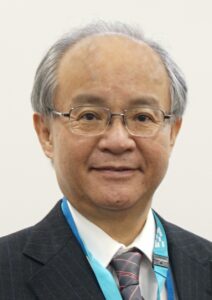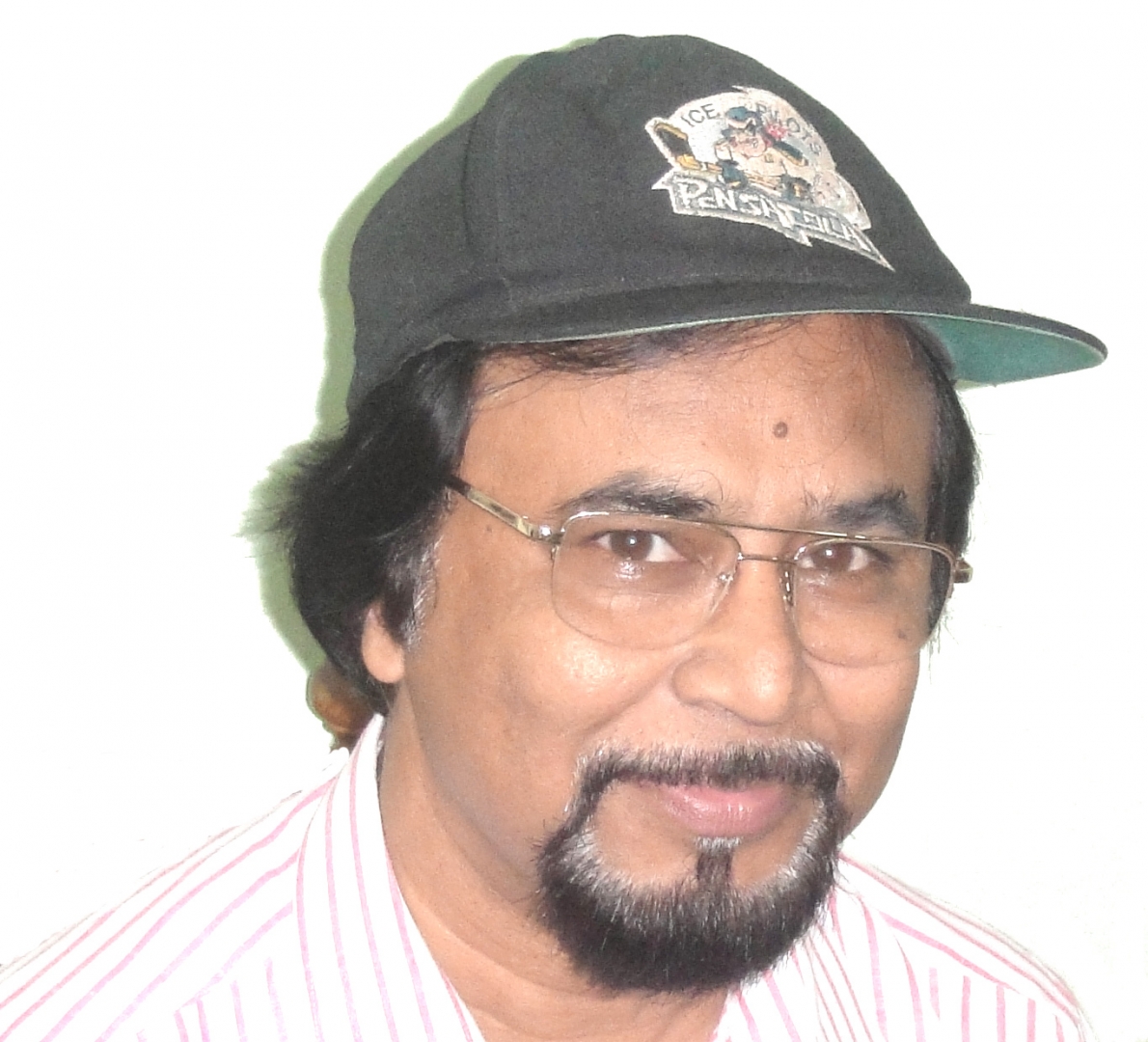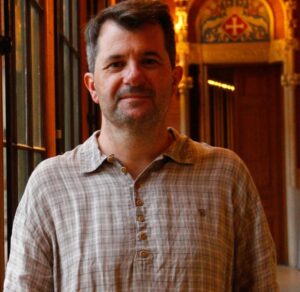Plenary Speech IV
Time: 10:45 ~ 11:35
International Conference Hall, B1 Level of Engineering Bldg. 5
| Humanoid Robotics Research and Its Applications
Prof. Atsuo Takanishi Professor in the Department of Modern Mechanical Engineering Waseda University Director of the Humanoid Robotics Institute, Waseda University, Japan. |
 |
Abstract:
Even though the market size is still small at this moment, one can now easily expect that applications of robots will expand into the first and the third industrial fields as one of the important technologies to support our society in this century. There also raises strong anticipations in the world, like Taiwan, Japan, USA, EU, and other Asian counties mostly facing the declining birthrate problem, that robots especially humanoid robots for the labours, public services and personal uses. On the other hand, humanoids/human-like-robots have been treated as subjects of robotics research in Japan over the last five decades such as, not only industrial uses, but also research tools for human science, entertainment/mental-commit robots or assistants/agents for humans in the living environment and many other cases. Especially the last two decades, manufactures and telecommunication companies started to develop prototypes or even mass production humanoid robots for the purposes mentioned above. From this summer, there started an industry driven organization called KyoHA standing for “Kyoto Humanoid Association” that well known industrial companies join together and develop humanoid related technologies/components/humanoid-robots. In the keynote speech I will introduce our research activities on humanoid robots and their applications such as walking, musical, theatre play, sports, medical-patient-simulator and disaster rescuing purposes, etc. Please see our web page for more detailed information: http://www.takanishi.mech.waseda.ac.jp.
Biography:
ATSUO TAKANISHI is the Department Head and a Professor of the Department of Modern Mechanical Engineering as well as the director of the Humanoid Robotics Institute, Waseda University. He received the B.S.E. degree in 1980, the M.S.E. degree in 1982 and the Ph.D. degree in 1988, all in Mechanical Engineering from Waseda University. His research projects are related to Humanoid Robotics and its applications in medicine and well-being, such as the biped walking/running/baseball-pitcher humanoids, the emotion expression humanoids, the flute/saxophone player and musical conductor humanoids, the ultrasound medical inspection robots, the patient simulation humanoids for airway management training, disaster response humanoids, etc.
He was the former President of the Robotics Society of Japan (RSJ) from 2015 to 2016 and is the Chairman of the Japanese Council of the International Federation for the Promotion of Mechanism and Machine Science (Jc-IFToMM). He is a member of many robotics and medicine related academic societies and governmental committees such as IEEE, RSJ, and the Society of Mastication Systems, the Robot Revolution Initiatives, and a Vice President of the Fukuoka Prefectural Robotics and Advanced System Industry Development Council, etc. He is a fellow of RSJ, the Japanese Society of Mechanical Engineers (JSME) and a senior member of IEEE.
He received the RSJ Best Journal Paper Award (1998), RSJ/JSME ROBOMECH Award (1998), BusinessWeek Best of Asia Award (2001), IROS2003 Best Paper Award –Application (2004), JSME Best Journal Paper Award (2006), ROBIO2007 Best Conference Paper Award (2007), RSJ Advanced Robotics Best Paper Award (2015) and many more domestic and international awards.
Plenary Speech V
Time: 11:35 ~ 12:25
International Conference Hall, B1 Level of Engineering Bldg. 5
| High Dimensional Fuzzy and Neuro-Fuzzy Systems: Crossing the barrier of 100000 variables!
Prof. Nikhil R. Pal Indian Statistical Institute, Calcutta, India |
 |
Abstract:
In this era of Artificial Intelligence, a very common belief is that deep neural networks and in particular large language models (LLMs) are “all-cure” solutions. It is true that such systems have demonstrated their utility on a wide variety of applications. But they can also miserably fail with very simple reasoning problems. Moreover, all problems are not LLMs, all problems are not big-data problems, and more importantly such systems have issues that prevent them from using in critical applications like healthcare and defence. Among various criticisms of such systems, the more frequently talked ones are lack of interpretability, explainability, and trustworthiness (even in a very narrow sense of the word). Fuzzy rule-based systems as well as neuro-fuzzy systems have some inherent characteristics that can help to realize interpretability of the model, explainability, and trustworthiness. However, two major issues arise as the dimension of the data set increases and these issues severely affect the desirable attributes of fuzzy systems. In fact, designing of fuzzy rule-based systems or Takagi-Sugeno-Kang (TSK)-type neuro-fuzzy systems for high dimensional data becomes difficult due to numerical underflow and the “fake-minimum” problem. In this talk, first we shall present how feature-selection and fuzzy rule extraction can be done for high dimensional data in an integrated manner using the TSK-Neuro-Fuzzy framework avoiding the underflow and fake- minimum problem. Next, we shall discuss how high dimensional fuzzy systems can be designed without reducing the dimension of the data before designing the rule-based system. The proposed system guarantees avoidance of underflow. Not only that, we shall also discuss, how explainability and trustworthiness of the high-dimensional system can be recovered. In this context, we shall demonstrate the effectiveness of the proposed scheme using datasets of dimension more than 100,000 both for classification and regression problems – to the best of our knowledge it is the first attempt to use data of dimension more than 100000 to design fuzzy rule-based systems!
Biography:
Prof. Nikhil R. Pal is an INSA Senior Scientist at the Indian Statistical Institute, Calcutta, India and an Honorary Visiting Professor at the South Asian University, New Delhi. He was a Professor in the Electronics and Communication Sciences Unit and was the founding Head of the Center for Artificial Intelligence and Machine Learning of Indian Statistical Institute. His current research interest includes brain science, computational intelligence, machine learning and data mining. He was the Editor-in-Chief of the IEEE Transactions on Fuzzy Systems for the period January 2005-December 2010. He served/has been serving on the editorial /advisory board/ steering committee of several journals including the International Journal of Approximate Reasoning, Applied Soft Computing, International Journal of Neural Systems, Fuzzy Sets and Systems, IEEE Transactions on Fuzzy Systems and the IEEE Transactions on Cybernetics. He is a recipient of the 2015 IEEE Computational Intelligence Society (CIS) Fuzzy Systems Pioneer Award and 2021 IEEE CIS Meritorious Service Award. He has given many plenary/keynote speeches in different premier international conferences in the area of computational intelligence. He has served as the General Chair, Program Chair, and co-Program chair of several conferences. He has been a Distinguished Lecturer of the IEEE CIS (2010-2012, 2016-2018, 2022-2024) and was a member of the Administrative Committee of the IEEE CIS (2010-2012). He has served as the Vice-President for Publications of the IEEE CIS (2013-2016) and the President of the IEEE CIS (2018-2019). He is a Fellow of the West Bengal Academy of Science and Technology; Institution of Electronics and Tele Communication Engineers; National Academy of Sciences, India; Indian National Academy of Engineering; Indian National Science Academy; International Fuzzy Systems Association (IFSA); The World Academy of Sciences; and a Fellow of the IEEE, USA.
Plenary Speech VI
Time: 13:15 ~ 14:05
International Conference Hall, B1 Level of Engineering Bldg. 5
| Bridging Semantic Understanding and Robot Execution Guillem Alenyà, Ph.D Researcher and Director at the Institut de Robotica i Informàtica Industrial (IRI) |
 |
Abstract:
As robotics systems become increasingly integrated into human environments, the demand for flexibility, intuitive programming, and robust human-robot interaction grows. Despite significant progress, a fundamental challenge remains unresolved: bridging the gap between high-level decision-making and low-level execution. This disconnect is particularly critical in interactive scenarios, where a robot’s ability to model its own knowledge and reason about uncertainty is essential for ensuring reliability and trustworthiness.
To address this, robots must not only execute predefined plans but also adapt dynamically to unforeseen events. Ontologies offer a promising framework for explicitly representing abstract concepts and enabling explainable reasoning. Concurrently, the rapid advancement of generative AI models has sparked debate over the role of data-driven approaches in replacing or complementing classical symbolic methods. This talk explores the intersection of these paradigms, arguing for a hybrid approach that leverages the strengths of both to advance the development of socially aware, resilient robotic systems.
Biography:
Guillem Alenyà is Researcher and Director at the Institut de Robotica i Informàtica Industrial (IRI), a joint centre of the Spanish Scientific Research Council (CSIC) and Polytechnic University of Catalonia (UPC). He received a PhD degree (Doctor Europeus) from UPC in 2007 with a work on mobile robot navigation using active contours, which he partly developed at the Robosoft company in France, where he was supported by a EU-FP6 Marie-Curie scholarship. He has been visitor at KIT-Karlsruhe (2007), INRIA-Grenoble (2008) and BRL-Bristol(2016). He has participated in numerous scientific and technological transfer projects involving image understanding, next-best-view, rule learning from human examples and planing execution tasks. His current research is devoted to facilitate the introduction of robots in human environments, principally in the fields of assistive robotics and garment manipulation. He is coordinator of various projects on developing enabling technologies for assistive robotics: ROB-IN about personalization and explainability, CLOE-GRAPH about high-level representation of tasks and explainability (coIP J. Borras), and principal investigator in the SeCuRoPS project, about privacy and safety in HRI, and BURG, about benchmarking and repeteability. He has been coordinator of the SIMBIOTS project on cooperative robots and HuMoUR (on human-to-robot skills transfer, co-IP F. Moreno), and principal investigator of the SOCRATES project (on quality of interaction for social robots).
